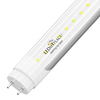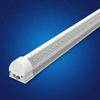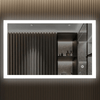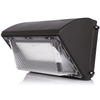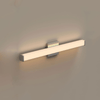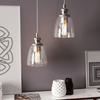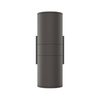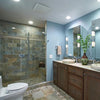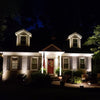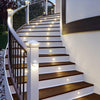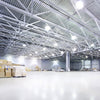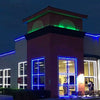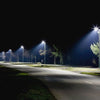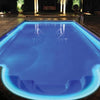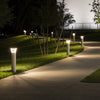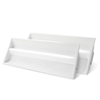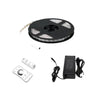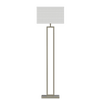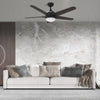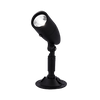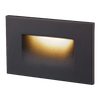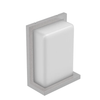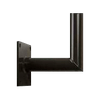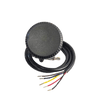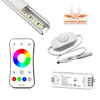Many of the models for incandescent bulbs were invented before Thomas Edison’s. None of the models invented before was as practical. As time went on, the technology advanced, and with new technologies, new features came up with time.
Technology took a giant leap when LEDs were invented in 1907s. But the initial low-powered LEDs were developed in the early 1960s. In 1968, the first commercial LED lamps were introduced, and that was the first step towards the development of LED lamps as they are today.
From incandescent bulbs to LED Light Bulbs, concerns have changed with the passage of time. Features like energy efficiency, CRI, and CCT become primary metrics of evaluation for all these lights.
In the early days, the objective with lighting was only lumens, but with time things changed. Lighting became application-specific, and so did the direction of evolution of lightings.
Let’s go through the evolution-
Incandescent Light Bulbs

The most basic and the most commonly used bulb is incandescent bulbs. These bulbs come in wattage range of 40-110 watts. These bulbs glow on heating, and to felicitate heating, filament transforms electrical energy into heat energy. This wear and tear mechanism reduces the life of incandescent bulbs by a significant margin. Life of these bulbs is only limited to one year, AND THAT to on an average usage basis. These lights render a yellowish light with a warm color temperature.
One can find these lamps in almost light application, from car headlamps to flashlights, decorative lighting for any festivals or flashlights.
These lights were categorized based on their shapes, sizes, and coating(clear and frosted)
These lights are slowly running out of use, thanks to the evolution of the new technologies.
There are many issues with these lights-
- Waste Concerns- Incandescent bulbs release toxic wastes upon decomposing. They release mercury vapor once they start to decompose. Mercury is a toxic material that has been responsible for many deaths in the past.
- Energy wastage- Incandescent bulbs waste 30% of the total energy in the form of heat by heating. This is a huge power wastage if compared to what LEDs have achieved today in terms of power efficiency.
- Short Life- The incandescent bulbs last up to 1 year on average daily usage.
Halogen Light Bulbs

Halogen light bulbs were invented to provide high lumen output and to light up large areas. They were similar to the incandescent bulbs in terms of using filaments as a heating element. Due to the halogen cycle, the energy consumed is quite lesser than compared to tungsten filament of incandescent bulbs. The halogen cycle eliminates the wear and tear mechanism, and hence extend the life of the of these bulbs compared to the incandescent bulbs.
The improvement was too little over the incandescent bulbs. It was too little to be called an improvement.
Halogen lights produced a white light similar to daylight around noon. These lights lasted up to a year, almost equal to an incandescent bulb.
Issues with these lights
- Unsafe for usage- The filaments of these lights warms up so quickly, and there was no mechanism to control. The filament heated up quickly and exploded, so it posed as a lethal thing.
- Short Life- Just like the incandescent lights, these lights also lasted for about a year. It was short compared to the generations that came further.
CFL Light Bulbs

Compact fluorescent bulbs or CFLs were the first ones to be tagged as energy-efficient lights. Two electrodes at the end of each tube containing argon and mercury react and produce UV light, which later transformed into visible light after striking the phosphor coating inside the bulb.
These lights were the first ones to last ten times longer than the halogen bulbs and incandescent bulbs.
Issues with CFLs-
- Short life compared to LEDs- Compared to the LED lights, these lights still lasted a bit earlier. They were still long-lasting than the old lighting fixtures.
- Large operating time- CFLs took 30 seconds or more to become fully lit.
- Mercury- These lights contained mercury, so one has to be extra careful about using these lights.
LED Light Bulbs

In 1968, the first commercial LED lamps were introduced, and they continue to evolve like forever. These lights are energy-efficient, which means only 5% of the total energy they consume is wasted in the form of heat, and the rest 95% of the energy is converted into light, thanks to the most energy-efficient photoluminescent transition available.
The heat produced by these lights is absorbed into a heat sink, keeping the bulbs cool and also energy saving at the same time.
These lights have no issues like the old lighting technology, and they continue to improve with time.
They last up to 50,000 hours, which translates roughly to 10 years with an average usage of 3 hours per day.
These lights are not sensitive to sudden temperature changes; they can operate at ultralow temperatures as well. They also come with waterproofing options also.



